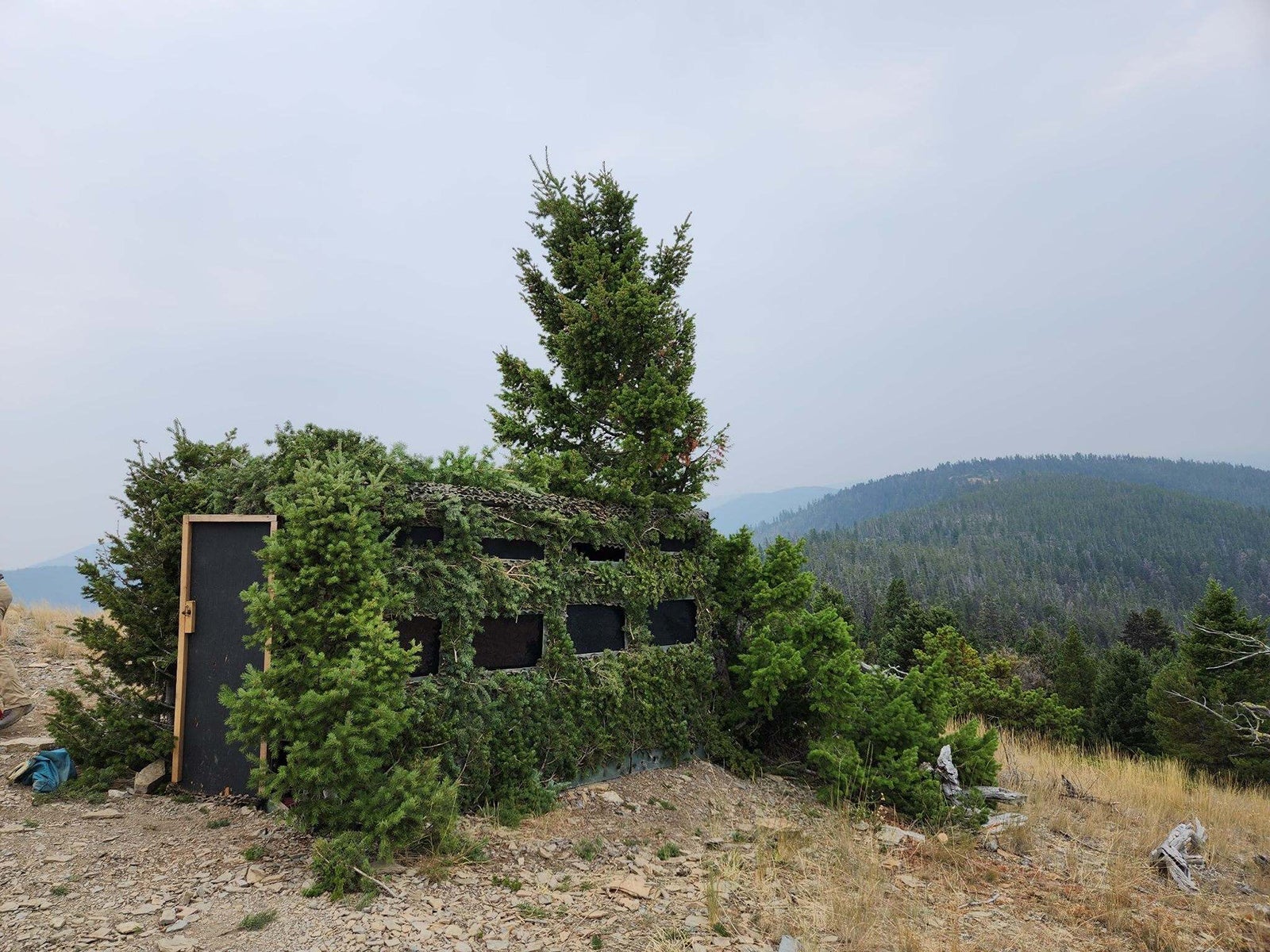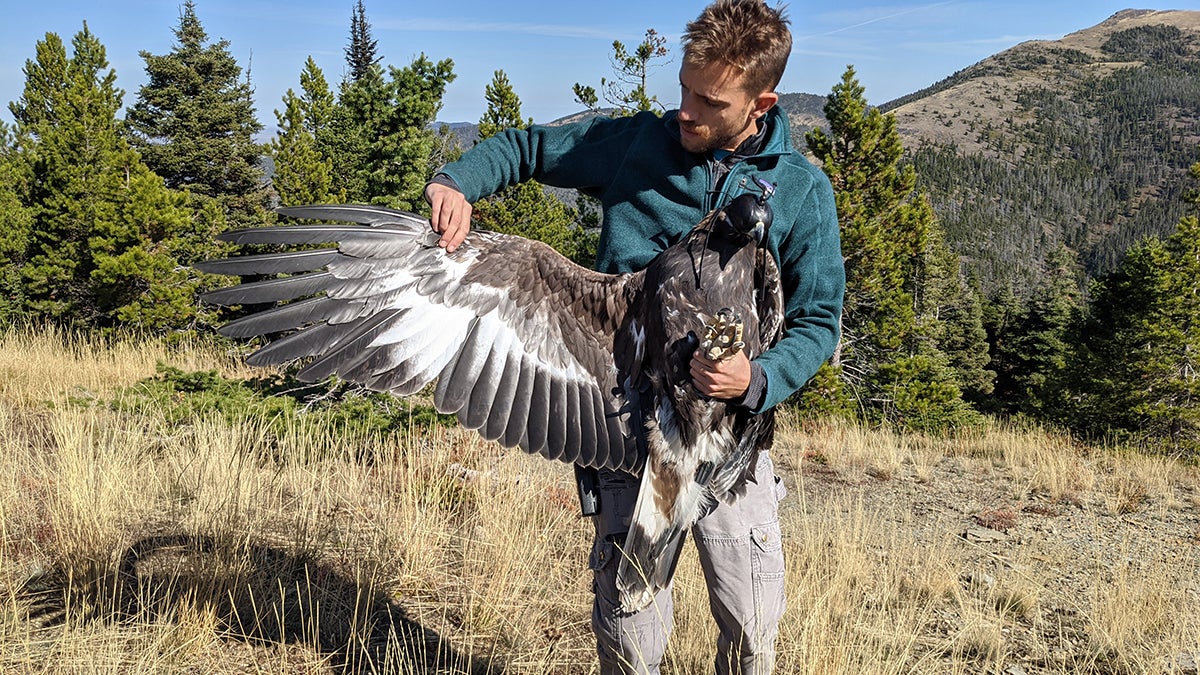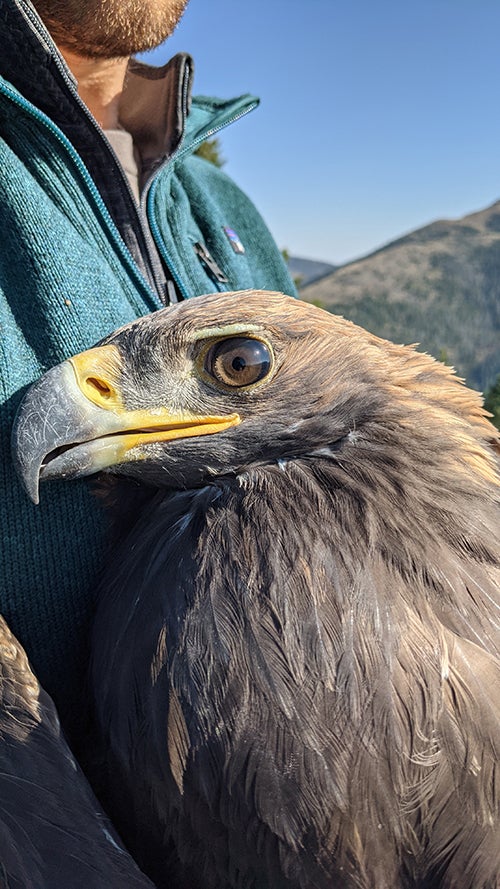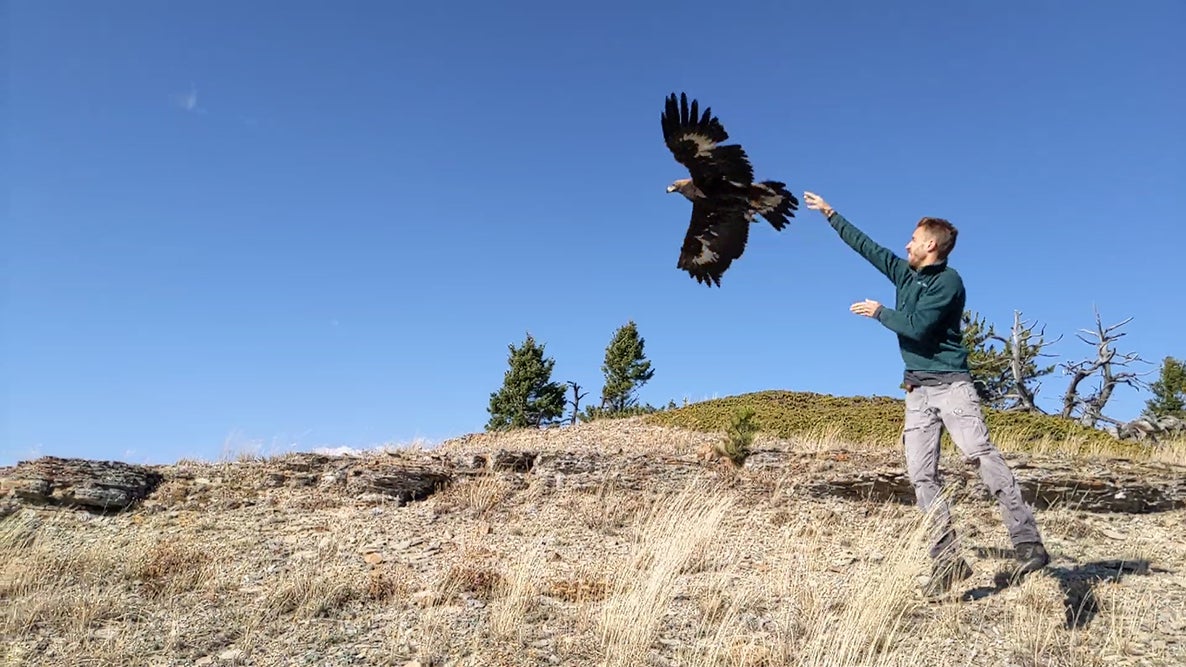
From a trapping blind decked out in camouflage in the Rocky Mountains of Montana, Boise State alum Brian Busby peers through angled and tinted plexiglass windows, waiting. Outside, a rock pigeon circles the area in a protective vest, attached to an imperceptible strand of fishing twine. A concealed spring-loaded contraption stands at the ready to cast its seven foot diameter fine-mesh net. Everything is ready and in place, but as Busby knows, golden eagles are not easy to fool.
“People don’t realize how skilled and adept golden eagles are. They are extremely intelligent, which makes them extremely difficult to trap. They just clue into everything,” Busby said.
With two-inch talons, a wingspan taller than most humans (six to seven and a half feet) and undeniably clever minds, North America’s largest eagle might appear invulnerable. But these majestic raptors are in more danger than meets the eye. Collisions with wind turbines, illegal shooting and persecution, habitat loss, climate change and lead poisoning are only a few major threats to these birds of prey.

Busby (MS, Raptor Research, 2021) works with the Raptor View Research Institute as a biologist to study and protect this marvelous species. With his colleagues, he catches golden eagles along the Rocky Mountain front during their fall migration to collect measurements, place GPS transmitters on the eagles, and study their migration patterns, especially in relation to wind farms.
“Wind turbines can represent a massive site of mortality for Golden Eagles,” said Busby. “By studying the eagles’ flyways, the institute can work with land management groups to influence where wind farms are placed.”
Busby also collects and analyzes blood samples to look for elevated lead levels, a critical issue for these raptors and major point of study for the institute.

When hunters clean out their kill, or shoot an animal that survives long enough to evade being collected, wintering golden eagles will feed on these carcasses and ingest the lead shot. Busby says he has witnessed golden eagles with blood-lead levels so high that they are–somehow–still alive, but incapable of functioning. Through his research, he hopes to change that.
“We work with several hunting and angling groups to get people to voluntarily switch away from lead ammo, specifically when hunting their game. So, use lead at the range, and copper for the game,” Busby said. “That’s something that we’ve been working on for a while and I’m hoping that we’re going to see lead levels starting to come down.”
Busby said his education in the Boise State raptor research program was pivotal to rounding out his knowledge as a researcher and preparing him for his “dream job.”
Jim Belthoff, a professor and interim director of the Boise State Raptor Research Center, mentored Busby as a student. Together, they conducted research on barn owls and their unusually high mortality numbers along roadways. According to Belthoff, Busby was a “one in a million” student.
“It was a particular pleasure having Brian in our laboratory as he is so enthusiastic, inquisitive, detail-oriented, collegial, hardworking, and smart, and he loves field work,” Belthoff said. “To be a successful researcher one needs passion and dedication for their work, and Brian certainly exhibits these.”
For Belthoff, it is immensely rewarding to know that so many of the program’s students, like Busby, claim important research, academic and government positions and continue to be scientific leaders in the field of avian ecology and conservation.
“I came to Boise State to increase my statistical knowledge, and my ability to start a research project and walk it all the way through to publishing,” Busby said. “I got exactly what I wanted, and I’m so grateful for it.”Brian Busby
